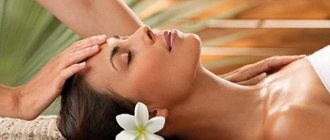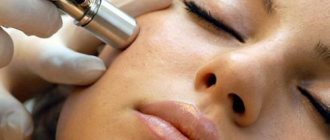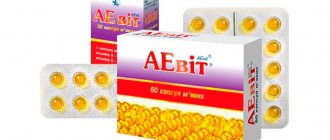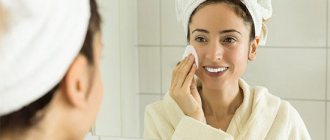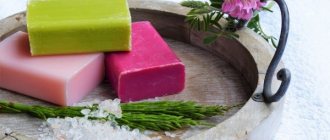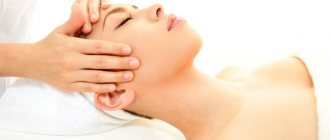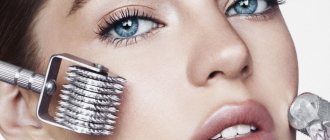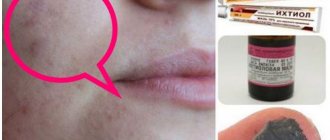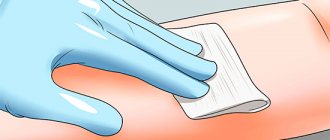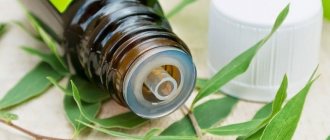One of the latest new procedures that you can get in modern beauty salons is coral peeling, which involves mechanical exfoliation of the keratinized outer layer of skin. It is performed by cosmetologists and is the main competitor to chemical peeling. The products for this procedure include only natural ingredients, the main one being fine coral powder, hence the name of the peeling. It acts like microdermabrasion, i.e. removes the upper and partially middle layers of the dermis.
This type of peeling is classified as mechanical, and the treatment agent contains:
- Crushed coral ((microchips),
- A mixture of essential oils,
- Dead Sea sea salt,
- Plant extracts.
Corals are sourced from the Red Sea and are taken at different stages of development so have different effects on the skin. Young coral powder acts as a skin stimulant, but old coral powder works like needles, plunging into the epidermis and scraping away dead skin particles, further stimulating blood circulation.
Recovery period
To consolidate the results obtained and restore microdamages, you will need complete skin care after peeling, especially with an aggressive coral product.
For speedy cell regeneration and renewal, you must follow several recommendations:
- 1st day. The skin should not be washed with water or touched. In case of severe tightness and pain, it is permissible to use Panthenol cream.
- 2nd day. The epidermis is strongly pulled. Washing with water with the addition of lemon juice and treating damaged areas with Panthenol is allowed.
- 3rd day. The skin darkens, flakes and itches. The epidermal tissues peel off in layers, but they cannot be torn off; the process must take place on its own. The recommendations are the same as on the second day.
- 4th and 5th day. Intense peeling is observed. A rich cream is applied to the face, the skin is carefully massaged, particles of the epidermis are collected into pellets and removed with cotton pads.
During the recovery stage, it is prohibited to use scrubs and other products with aggressive particles.
The resulting crusts should not be touched; they are a natural reaction of the skin and protect against the entry of pathogenic bacteria.
After the procedure, you should refrain from visiting solariums, swimming pools, baths, and beaches. The skin must be carefully protected from ultraviolet radiation to prevent the formation of age spots.
After the procedure, you may encounter complications in the form of an allergic reaction, swelling, pain, and infection. But such consequences rarely appear.
Can side effects occur?
Reviews of coral peeling confirm its high safety and gentle effect on the skin. Basically, the procedure does not cause complications.
In some cases, after cleaning the epidermis, a pustular rash appears. This phenomenon mainly affects patients with weakened immune systems. Damage to the epidermis can also be caused by improper distribution of the product or violation of hygiene rules during facial treatment.
Side effects often occur in people who neglect the rules of skin care after peeling. If you refuse to apply sunscreen to your skin, the risk of worsening chronic infections or developing hyperpigmentation increases significantly.
How is peeling performed?
Theoretically, coral peeling can be done at home, but it is still better to visit a salon for the first time. The procedure is not pleasant, so prepare in advance. First, make-up is removed, makeup is removed, and the face is cleaned of dust and dirt. Afterwards, the skin is steamed and covered with a special gel, this is necessary to open the pores.
It should be noted that if this is the first peeling in your life, then you need to do some preparatory work first (about a month before it). For example, soapy (GIGI or C7 Facial Peel Cellution) or Yellow Peel Retises. This will help avoid many troubles.
Photo - Application of product
The powder is applied, like badyaga, after dissolving with boiled water - you need to mix the dry mixture: water in a 2:1 ratio. Professional cleaning lasts from a few minutes to 10, depending on the indications. The mixture is rubbed into the epidermis in a circular motion. The sensations can be compared to rubbing hard grains of sand or even pieces of glass on the skin.
Afterwards, a cold wet towel is immediately placed on the skin, this is necessary in order to calm it down. After 10 minutes, it is removed and a gel mask is applied to your face, which will protect you on the way home from any infections. On average, the post-plying period of Rozdemer EPI-1 lasts up to 5 days, but in some cases some complications are possible.
The photo before and after coral peeling clearly shows that the skin immediately after the session is very red and inflamed, by the evening it will become even more scarlet. During the first 24 hours, your face may feel like glass wool, but if you wash your face with acidified water (a spoonful of vinegar 6-8% per glass), it will be a little easier.
Video: step-by-step peeling process
Stages of the procedure
Before using the composition for scars, acne, wrinkles and other appearance defects, no special preparation is required. Some experts recommend preliminary yellow peeling, which has a superficial effect (best of all, a month before cleaning).
The protocol for a cosmetology session consists of several stages:
- examining the face, choosing the right tactics. Having assessed the condition of the epidermis, the cosmetologist determines the optimal duration of exposure to the drug;
- cleansing the skin. Before distributing the peeling composition, all contaminants (residues of cosmetics, sebaceous secretions) are removed;
- treatment with a product that helps open pores. Thanks to its application, the removal of sebaceous plugs and comedones is greatly facilitated;
- applying peeling. The cleansing composition is distributed evenly over the surface of the skin and a light massage is performed (this stage is accompanied by a slight tingling sensation);
- removing peeling, applying a cold bandage. After 10–15 minutes. the skin is treated with moisturizing cream.
The whole process takes about 10 minutes. Having completed the first procedure, the cosmetologist clarifies how many more treatments will be required to solve the existing problem. On average, the course includes from 3 to 5 sessions. You can do coral peeling no more than once a month.
Advantages and disadvantages
Coral cleaning is a middle type of fabric treatment. Therefore, peeling guarantees complete cleansing of the epidermis, which results in the activation of natural regenerative processes and renewal of the skin. Cosmetologists consider the following points to be the most significant advantages of the method.
- Control of penetration depth of solution components.
- Possibility of carrying out the procedure for rosacea and other vascular changes in the skin.
- Lack of preparatory stage.
- Can be used at any time of the year.
- Versatility.
In addition to the presence of contraindications, this type of cleaning has other disadvantages. If we compare the procedure with other methods, it has relatively fewer disadvantages.
- Traumaticity. Cleansing with coral chips is mechanical in nature. During it, the top layer of the epidermis is peeled off, which leads to swelling, redness and peeling during the recovery period.
- Unpleasant sensations. During the session, the client often feels pain. After the procedure, burning and itching may occur, which quickly disappear.
- High price. The cost of one skin cleaning procedure with crumbs reaches 5 thousand rubles. If you successfully catch the time of promotions in beauty salons, then the Christina Rose de Mer peeling can cost you much less.
Many women, in order to save money, prefer to carry out coral cleansing themselves. To do this, just purchase special peeling products and watch several master classes. The next part of our article will be devoted to the stages of coral cleaning.
Precautionary measures
It is advisable to carry out cleansing with the drugs mentioned above in salons or independently, but after seeing a dermatologist.
We invite you to familiarize yourself with the Drug for the fight against papillomas, etc.
It is unacceptable to apply gels, lotions, creams containing organic acids and other aggressive components. Otherwise, a burn or allergic reaction will develop.
Side effects
After the procedure, certain symptoms may occur, including:
- pain and burning;
- hyperemia of the skin;
- feeling of tightness;
- peeling of tissue.
All signs go away on their own without additional intervention.
Formation of a pustular rash. In this case, the doctor probably did not treat the skin with antiseptics or took on a patient already suffering from active acne. A decrease in local immunity is also possible.
Exacerbation of herpes. Any such intervention can lead to a rash; this must be remembered before starting peeling.
The appearance of age spots. When performing the procedure in the summer and not using a special filter cream, melanin is actively produced.
If there are significant changes, you should consult a cosmetologist for advice.
Contraindications
Coral peeling is not suitable for all patients. The procedure is contraindicated in the presence of the following diseases:
- Acne in the active stage. In case of inflammation and the appearance of pustules, cleansing is strictly prohibited. This is explained by the fact that an infection located in one area will spread to another area of the epidermis and cause a new lesion. As a result, the course of the pathology will worsen, and deep scars will form.
- Demodecosis. The disease is associated with the activation of an opportunistic mite - the acne gland. The ban is due to the same mechanism as with acne - greater spread of the pathogen and greater inflammation.
- Acute herpes. Opening blisters with herpes is strictly prohibited, since the secreted fluid contains viruses that penetrate new healthy cells.
In summer, cleansing is not carried out, because the skin is left without protection, ultraviolet rays damage the epithelium and stimulate the development of hyperpigmentation.
Post-peeling care
Post-session care:
- You can't go outside without sunscreen. UV rays are active even in winter, so it’s better to be on the safe side;
- You need to hydrate all the time. Constantly smear with Bepanten gel (inflammation may begin from the ointment) or D-Panthenol;
- You cannot remove the scales yourself - scars may remain. It's better to wait and they will come off on their own. This happens with proper care on the 4th day;
- Try not to go outside unnecessarily for the first couple of days. At this time, the skin is most susceptible to chapping;
- You cannot sunbathe in a solarium, visit baths, saunas and other rooms where the temperature is very high. Because of it, the healing process will be delayed;
- Decorative cosmetics are also prohibited during the healing period.
Photo - Redness after the procedure
Many girls do not know whether it is possible to do coral peeling in the summer. It must be remembered that any such exposure in the summer is strictly prohibited! After it there can be a variety of consequences, ranging from age spots and vitiligo, and ending with the appearance of scars. If you want to do this procedure, then the best period is from October to December and from February to March.
To achieve the best effect, you will need to buy a subscription for several sessions at once. Each can be held no more than once a month, so calculate the time and period of the year in advance. After two weeks, you can supplement your personal care with scrubs with badyaga or nourishing mixtures based on natural oils. Despite the fact that peeling can be done at home, most girls still choose a beauty salon and the services of professional cosmetologists. The price of the procedure depends on the additives that may be included in the product and the brand of powder.
Almost every clinic provides periodic trial or promotional sessions where you can personally evaluate all the advantages and disadvantages of coral peeling.
Care after peeling at home
The quality of the procedure is largely determined by proper home care.
The following actions are recommended:
- 12 hours after the session, you need to wash your face 2 times a day with warm boiled water and antiseptic soap diluted in it. Rinse with one glass of water with 1 tablespoon of table vinegar (9%). Afterwards, the skin should be dried, and ideally, a little hyaluronic acid should be applied to the face and décolleté, which will help preserve the elasticity and water balance of the skin.
- When peeling begins (about day 3), you need to use moisturizing, nourishing creams
- When the peeling disappears (approximately on the 4th day), a compress with warm water and softened soap will be useful for the skin, and after that a light massage of the skin lubricated with Vaseline or moisturizer. Afterwards, the skin is thoroughly washed to remove any remnants of applied products.
- If rose de mer peeling was done in late spring, summer or early autumn, then it is necessary to apply sunscreen with a protection factor of 15 SPF every time you go outside.
The recovery period, as mentioned above, takes 5 days, although sometimes it can last a week. Some patients complain of severe redness and peeling, but such a reaction is an exception to the rule. In the overwhelming majority of cases, wrinkles and stretch marks are erased from the skin, it acquires a uniform tone, unevenness disappears, pores narrow, that is, the skin takes on a naturally attractive appearance.
Efficiency of application
Coarse particles of coral and salt have good grinding abilities. The procedure allows you to cleanse the surface of the skin by removing the upper stratum corneum. This leads to a leveling of the relief: a decrease in the depth and severity of wrinkles, scars, and bumps. The number of interventions to achieve an effect depends on the severity of the problem.
The exfoliating effect of the scrub is similar to a massage. After the procedure, impaired blood circulation and lymph flow are restored. Proper muscle function is stimulated, metabolic processes return to normal. The skin looks fresh, tightened, healthy. The effect is noticeable after a single session. A neglected situation will require a course of intervention.
Coral peeling allows you to lighten age spots and freckles. After a single treatment, dark areas become less noticeable. A course of interventions (3-4 sessions) will help to completely get rid of the uneven shade. This is only possible in combination with regular sun protection: you will need to use a cream with UV protection.
The procedure helps to narrow enlarged pores and normalize the activity of the sebaceous glands, which has a positive effect on the quality of the skin. The integument becomes attractive in appearance: more even, matte. The predisposition to frequent rashes disappears (if the destructive process is not related to health). Acne and comedones are cleared in 1-2 sessions; acne treatment requires a course of interventions.
Treatment effectiveness
The depth of treatment depends on the area being treated and the technique used. Tiny needles stimulate collagen production, creating channels to improve the penetration of nutrients into the tissue. Powerful natural ingredients maximize effectiveness. A safe and scientifically proven method, it allows you to achieve good results, in contrast to the known aggressive chemical treatments. It promotes mild desquamation.
Effect:
- natural lift;
- reduction of wrinkles, fine lines and stretch marks;
- improving blood circulation and oxygen supply to tissue;
- removal of acne scars;
- improvement of complexion;
- surface leveling;
- strengthening capillaries;
- improvement of elasticity.
Coral peeling Rose de mer (Rose de mer) from Christina (Christina) ↑
You can also use coral peeling at home. Many women prefer just such products. A drug from the Israeli company Christina, called “Rose de mer,” is in great demand on the modern market. This is a ready-made product that simply needs to be diluted before application as it has a powdery consistency.
In fact, this same product is actively used for professional coral peeling courses in beauty salons. But many women prefer not to overpay for the services of a specialist, but simply purchase this product for independent use.
Coral peeling Christina is a product that has a pronounced abrasive effect. During peeling, coral particles exfoliate and remove dead cells from the surface of the skin, thereby significantly smoothing out skin defects and its texture.
After the procedure, the upper layers of the skin begin to actively regenerate and renew themselves. In some cases, when skin problems are too pronounced (for example, there are deep acne dents or scars), more intense and thorough rubbing of the peeling mass into the skin may be necessary. In this case, it is better not to skimp on your beauty and immediately contact an experienced specialist at the salon.
There are a lot of articles on the blog about different peelings. We invite you to learn about carbon peeling from the article “Carbon laser peeling: procedure technique, effect.”
Since this type of peeling will already affect the middle layers of the skin, unpleasant sensations and severe redness of the face after the procedure are possible. The recovery period in this case can take from two to five days. With superficial gentle peeling, the skin will recover in just a few days.
This method has very few contraindications:
- Injuries and violations of the integrity of the skin.
- Stage of active herpes (sores on the lips and face).
- The period of pregnancy and breastfeeding.
After peeling, you will need to follow a number of important rules, as well as properly care for your skin in order to quickly restore its beauty and health. In many ways, the duration of the recovery period after coral peeling depends on proper care. Therefore, do not neglect the advice and instructions of your master.
We invite you to explore another effective type of peeling. Read the article “Almond facial peeling: technique and reviews” to learn more about the home procedure.
Consequences
- Pain and burning. It happens to everyone, but the severity of it varies from person to person due to different pain thresholds. It may be that on the first night, burning and rawness will prevent you from falling asleep. In this case, you can take either an anesthetic drug such as Tempalgina or soothing drops such as Valocordin. On the second day, the discomfort decreases and almost completely disappears by the third day.
- Redness of the skin. It may vary in severity depending on the initial condition of the skin and its sensitivity to damaging factors.
- Skin tightness. Usually pronounced significantly even if the coral dust was rolled in shallowly. Gradually goes away as peeling appears.
- Peeling. Everyone has it. But its severity may vary. Some “climb like snakes”, while others may have slight peeling and mostly during and after washing.
Video: Rose de Mer
What is coral facial peeling? ↑
Coral peeling is not a chemical peel, which works by burning the top layer of the epidermis. The main active ingredient in this peeling is natural coral chips. Therefore, this procedure is perfect for even the most sensitive skin.
It should be noted that such a procedure will not be cheap, regardless of whether you perform it in a cosmetologist’s office or at home using a ready-made purchased product. The fact is that natural coral chips cannot cost a penny. This is an expensive raw material that is extracted from the bottom of the sea, and then processed and crushed in a special way.
In addition, in addition to crushed coral, this peeling also includes other ingredients. For example, in almost any composition of coral peeling you can also find crystals of Dead Sea salt. These two components complement each other perfectly, creating an ideal tandem.
As you can already understand, coral peeling is an abrasive procedure, so it does not contain any chemicals or unnatural additives. Moreover, this is a real find for lovers of ecological, bio-natural care procedures.
We recommend exploring other types of peelings. For example, the article “Peeling based on glycolic acid: photos and reviews” describes all the features of the procedure and how you can do it at home.
Often other natural ingredients are included in salon peelings: for example, essential oils, other natural abrasive particles, and nourishing plant ingredients. A full course of such peeling will take you a lot of time, because the procedures need to be performed no more than once every two weeks. The most common course is the one where about four to five sessions of coral peeling are performed.
This product will help cope with many skin defects:
- With pronounced marks and post-acne spots.
- With excessive bumpiness and texture of the skin.
- With small scars and old stretch marks.
- With uneven skin color and age spots.
- With a dull complexion and premature sagging.
During the procedure, a special peeling composition is applied to the face. A master working with gloves uses smooth massaging movements to treat one area of facial skin after another, especially working on problem areas. So, if you have unsightly spots and indentations on your cheeks after acne, then an experienced specialist will properly treat these areas with coral peeling, significantly evening out the skin texture.
During the session, you may feel slight discomfort and a slight burning sensation on the surface of your face. This is due to the fact that small particles of sea salt and crushed coral gently thin the layer of keratinized cells, erasing it. After the procedure, redness of the facial skin may occur due to the mechanical effects of peeling. This phenomenon is normal and passes quickly.
Composition and types of coral peeling
The composition of the product in question is as natural as possible. Up to 99% of the peeling is represented by fine crumbs, which are extracted from Red Sea corals. The preparation also contains Dead Sea salts, herbal extracts, and essential oils.
Some types of products from the Christina company contain acids of plant origin. Such components are added in minimal concentration.
There are 2 main types of peeling composition:
- soft, containing a large number of herbal extracts, used for superficial cleansing of the skin;
- classic (medium), exhibiting a long-lasting effect, including a large amount of coral chips.
Products from the Rose de Mer series are superior to many chemical peels. Facial cleansing with such preparations is considered better because it does not cause side effects and can be done regularly over a long period.
Coral peeling procedure
After the facial skin cleansing procedure, a mixture with the addition of coral dust is applied to it and you can immediately feel discomfort due to the bad smell, which is more reminiscent of algae and fish. Then the mixture of coral dust is rubbed into the skin and the person begins to feel severe pain.
Usually the procedure is similar to scraping with sandpaper, which means not every client can withstand it. Therefore, the procedure itself takes place quite quickly within 2-3 minutes. As a rule, after massaging and rubbing in the dust, the entire mixture is washed off. The most interesting thing is that the pain does not disappear, since the dust that has already entered the skin continues its work.
The peeling procedure does not end
The last stage of the peeling procedure involves applying foundation, which is based on clay. It helps to further protect the injured parts of the skin and will relieve some redness. The foundation should not be washed off during the day.
Recovery period after coral peeling
Basically, clients who use the coral peeling service are interested not only in the effect itself after the procedure, but also in how long the recovery period takes. We can say right away that the recovery process takes from 2 days to a whole week and during all this time such temporary negative effects can be observed as:
- redness on all parts of the face, as if after a sunburn;
- painful sensations due to particles of coral dust remaining on the face;
- tightening of the skin;
- swelling.
recovery is almost impossible
After a few days, you may notice how the skin begins to peel off greatly, or even resemble a terry towel in its appearance. While the skin on your back can still be hidden, this trick won’t work on your face, so you should be prepared for the fact that people will sometimes give you puzzled looks. Small pieces of crust may also form on the skin that should not be touched.
Skin care after peeling
After coral facial peeling, it is recommended to carry out some additional skin care procedures at home. It is worth noting that all procedures can be done at home and independently without the supervision of a cosmetologist.
After coral facial peeling, it is recommended to use:
- shower gel;
- retinol mask;
- serum.
When caring for facial skin at home, you need to remember that you cannot use creams with a high fat content, since such substances glue the falling skin together, and this significantly increases the recovery time. In addition, you cannot sunbathe in the sun or visit swimming pools, baths and saunas. If you still need to go outside when the sun is shining, then it is better to put sunscreen on your face.
Some cosmetologists may also recommend making thermal waters for washing with a small amount of vinegar.
The result of using all the recommendations for home care for the skin of the face or other areas of the body leads to a reduction in the recovery period and pain, as well as an improvement in appearance.
Coral peeling: before and after photos
How does the procedure work?
First, a few days before the procedure, you need to do a thorough mechanical cleansing of the face to open the pores. Before the procedure, you need to use antiseptic soap. The main thing is to best prepare the skin for peeling and protection from microcracks.
In beauty salons, coral peeling is mainly carried out using Rose de Mer preparations from the Christina Israel firm, which produces professional medical and cosmetic products. In principle, coral peeling can be done at home, if you purchase these drugs and in accordance with the instructions. But to obtain the maximum effect, you should study and take into account the characteristics of your own skin and substrate preparations, which only a specialist can understand. That's why, before doing peeling yourself, first consult a cosmetologist.
Processing is carried out in stages and is done by hand. First, the skin is cleansed using a pre-peel solution. Then an exfoliating composition is applied, the concentration and duration of action of which is selected individually. Crushed corals thoroughly and gently polish the skin while it is nourished with scarce nutrients. Some of the peeling substances have an antiseptic effect, strengthens capillaries and ensures resorption of hemorrhages deep under the skin, ensuring good regeneration and biostimulation. After a certain time, the product is washed off and the treatment area is lubricated with a protective cream.
Coral peeling is always accompanied by slight discomfort - after using the product there is some tingling with a slight burning sensation, and these sensations persist for some time (up to 2 days). In the first two days, the face after coral peeling will be red, then it will darken, and then a film will form on the skin, which will soon begin to peel off. This should be taken into account when choosing the time of treatment (it is best to go for treatment when you can stay at home for several days). Coral peeling is a course procedure of 3-4 sessions with 2-week breaks.
Peeling results
But the result of coral peeling fully justifies such minor sacrifices - the treatment area will noticeably refresh, become smooth and elastic, its color will be evened out, pores will narrow, and metabolism will return to normal. To achieve maximum results, the 1st procedure is not enough, although even a single coral peeling after the procedure gives an obvious effect. One full course of treatment is 4 sessions with 6-week intervals between them for oily skin types, and 3 months for other types.
So, first the powder is mixed, which consists of corals of various ages, seaweed extract and salt. Everything is thoroughly mixed, applied thinly to the skin, except for the area around the eyes, and a light massage is carried out with your fingers for 5 minutes.
Then a compress with a special product is applied for 10 minutes, which does not allow the skin to dry out and tighten. If you feel a tingling and burning sensation, this means that the process is going correctly. After removing the mixture (using cotton swabs), a soothing agent and cream are applied, which will help relieve redness of the skin and soften it.
Most Popular: 8 Ways to Get Rid of Crow's Feet Around the Eyes
Only one portion of the mixture is used at a time; the procedure can be repeated no earlier than after 7 days. After cleaning, the beneficial substances will work in the dermis for another 5 days. Do not be alarmed if the skin becomes tight and red in the first few days, and there is a burning sensation. On the 3rd day, the film that has formed on the skin will begin to peel off; on the 4th day, the scales will begin to peel off, but they cannot be peeled off.
Aftercare
After coral peeling, you need to follow several instructions. If there is peeling and itching, there is no need to comb the skin in any case. After treatment, you will need to constantly moisturize the treated skin with a hyaluronic cream with strong sun protection. In the first 7 days after coral peeling, you should not use a sauna or bath, and you should not expose the treated skin to overheating. For the first 14 days, sunbathing is contraindicated and going to a solarium is also not allowed.
In the first few days after peeling, it is recommended to use only boiled water with antiseptic soap for washing. After washing, you need to pat your face dry with a soft towel and apply cream. On the 3rd day it is already allowed to use regular detergents. You can also massage the skin with an oily cosmetic to help remove flakes from the skin. To better remove scales, you can use compresses with detergent. When the scales get wet, they are washed off well with warm boiled water.
Basically, after coral peeling, serious complications do not occur; all changes that occur in human skin during the first 5 days disappear imperceptibly, along with feelings of discomfort. But allergies, swelling and pain cannot be ruled out. This determines the health and degree of skin sensitivity. That is why it is recommended to consult a specialist before the procedure.
The principle of action of the drug
Rose de Mer is a bright representative of coral peeling; it has a coordinated composition that provides a comprehensive effect. The substance has an effective exfoliating effect. The components included in the composition help soften the surface layer, which facilitates the process of cleaning the surface.
Treated leather, which has experienced the mechanical work of solid particles, is exposed to components useful for restoration. Tissues receive nutrition and protection. The covers are leveled, tightened, strengthened. Mechanical damage to the top layer helps initiate regeneration.
How is the procedure performed?
There is no need for preliminary preparation before the manipulations - after the consultation, the cosmetologist can set a date for cleaning. The procedure is carried out according to the same scheme, regardless of which Christina brand product is used for cleaning. Only the time of the procedure can change - it depends on the depth of penetration of the composition and the defects that need to be removed.
Coral peeling protocol:
- The face is cleansed with special formulations to remove fat, dirt, and cosmetic residues.
- The cosmetologist prepares a mixture for cleaning; the concentration of active ingredients depends on the recommended depth of exposure, age, and characteristics of the dermis.
- The master applies an abrasive composition to areas of the face, neck, and décolleté (the duration of the procedure for surface exposure is 5 minutes, for deep penetration of active components into the epidermis - 10 minutes).
- With light massaging movements, the product is rubbed into the surface of the skin.
- A cooling compress is used to relieve irritation and discomfort.
- Residues of the drug are removed with wipes soaked in a special composition.
- A post-peeling gel is applied to prevent irritation; after it is absorbed, a protective cream is applied to prevent infection.
There are no unpleasant sensations during the manipulations. Patients feel only a slight burning and tingling sensation. Discomfort disappears immediately after cleaning and applying soothing compounds.
Indications for use
Coral peeling helps eliminate many problems. Common indications for the procedure:
- deterioration of the overall skin tone on the face;
- age-related changes in the form of sagging, wrinkles;
- hyperpigmentation;
- vascular damage;
- scars, scars;
- acne, post-acne.
Sessions are useful for various imperfections of the epidermis. If you have stretch marks and enlarged pores on your face, it is recommended to use a coral product with the addition of hyaluronic acid.
Existing contraindications
You should avoid using products with corals if you have certain disorders. The main contraindications to cleansing include demodicosis, acute form of herpes or acne, colds, and infectious diseases. The method is not recommended for use during pregnancy and breastfeeding.
Many cosmetologists do not recommend resorting to coral facial peeling in the summer. Otherwise, after each session you will need to use sunscreen with an SPF filter of at least 50.
Properties of coral peeling
By doing peeling regularly, you can get rid of a variety of cosmetic problems. After the first sessions, the skin will acquire a beautiful color, its tone will be even, and its surface will be smooth. The procedure allows you to make even abundant stretch marks less noticeable, eliminate swelling and tone the epidermis.
- Natural peeling is an excellent way to combat natural skin aging. It not only reduces the number and depth of existing wrinkles, but also prevents their new appearance.
- The procedure is effective in eliminating pigmentation, including age-related ones.
- The ability of cleansing to eliminate post-acne scars should not be underestimated.
- Coral facial peeling will help get rid of acne even in the severe stage of its development.
- The abrasive particles of the solution remove dead skin cells and dirt, and the active substances help dissolve dirt and fat.
Many women prefer to do peeling at home. In this case, it is imperative to use proven and recommended cosmetics by professional cosmetologists, otherwise a positive result will not be achieved.
Reviews about the procedure
Coral peeling reviews from patients who underwent treatment in cosmetology clinics
Alice 35 years old
After the coral peeling I felt a tingling sensation. On the advice of my cosmetologist, on the first day after the session, I applied vinegar diluted with cold water (boil and cool) to my face. Result: the skin is somewhat refreshed and rejuvenated. It felt smoother and softer to the touch.
Tatyana 43 years old
Coral peeling, I will be happy to leave reviews about it. It attracted my attention for a long time and finally I decided to try it. The next morning, my face turned slightly pink, which did not stop me from going to work calmly. I was very pleased with the result, although there was no peeling at all. I plan to undergo at least four procedures per year.
Margarita 39 years old
I have already completed 3 procedures and will definitely continue because I see good results. Before the start of treatment, I had a lot of old scars on my face. I thought for a long time whether to go for peeling or not... Now I regret that I didn’t go earlier.
What it is
Scrubbing with crushed corals is a cosmetic procedure that combines chemical and mechanical peeling. For maximum effectiveness, it is combined with various natural ingredients (herbs, oils, salts). The effect of the procedure is somewhat reminiscent of microdermabrasion and chemical glycolic peeling, but at the same time, it affects much deeper and more seriously.
Indications:
- The presence of scars and acne on the face and body (especially on the back and buttocks);
- Enlarged pores;
- The composition lightens the skin, so cosmetologists often prescribe it for age spots;
- Black spots, frequent inflammation;
- Enlarged pores;
- Comedones, acne rash.
Coral peeling
In addition, coral medium and deep peeling from Christina Laboratories (Christina, Israel) significantly rejuvenates the epidermis, eliminates wrinkles and somewhat lightens the top layer of skin, giving it a velvety appearance regardless of age. This occurs due to severe irritation of the spinous layer of the epidermis and the actual removal of the “old” tissue.
But even this natural drug has its contraindications. Despite the benefits of corals and their properties, allergies can occur to them. Be sure to take a test before your session. General contraindications for the procedure:
- You cannot conduct a session on sensitive skin - it will be very painful and injuries to the epidermis can further emphasize inflammation;
- It is strictly forbidden to do coral peeling for inflamed acne or open wounds on the face;
- This exposure is also not recommended during menstruation or pregnancy. The body is subject to hormonal changes, and the effect after the session will be unpredictable.
The best method to combat a number of aesthetic imperfections
First of all, this method is suitable for girls who experience allergic reactions to cosmetics. It is a rare case that an allergy to coral dust develops.
The procedure has shown excellent results in the fight against such imperfections as rosacea, vascular disorders, acne (regardless of severity), deep scars, skin pigmentation, post-acne. However, most often it is used to reduce acne and as a prevention of the consequences of acne.
Coral chips effectively exfoliate the upper layers of the skin, even if there are pustules on it, although conventional mechanical peelings are contraindicated for acne. The mechanical impact of coral does not cause reciprocal irritation, so sensitive skin does not suffer. Sanding with this cosmetic product prevents the formation of deep scars. After treatment, the rash goes away and soon the face, along with other areas of the body, acquires an even tone and natural radiance.
Are there any contraindications and side effects?
Coral facial peeling from Christina is considered one of the most gentle cleanses. Despite this, it has a number of prohibitions that should not be treated carelessly - this can end disastrously for the person. Contraindications to the use of coral-based products:
- viral infections;
- herpes;
- injuries to the skin (burns, wounds, cracks);
- negative skin reaction to some components of the drug;
- heat;
- chronic diseases at the peak of exacerbation;
- cold;
- pregnancy;
- breastfeeding a baby.
Even if there are no prohibitions on the procedure, you need to be prepared for the fact that undesirable consequences may arise. This happens quite rarely, but it is better to know in advance what you can expect after using the composition. Among the side effects, women most often expect swelling of the face, profuse purulent rash, and exacerbation of infectious diseases.
How is it different from other types of peeling?
The method belongs to the category of superficial-medium peelings. Features of the procedure are:
- maximum safety for different skin types;
- soft effect achieved through a natural base;
- Possibility of use for rosacea, as well as for those with thin, sensitive epidermis.
Other facial peels used in modern beauty salons predominantly contain synthetic ingredients. Such compositions include active acids and excipients.
Coral peeling is primarily intended for those with sensitive skin that does not tolerate chemicals well. The method will be a real boon for people prone to allergic reactions. The price of the procedure is considered one of the most affordable.
An important difference between coral peeling and others is the presence of abrasive particles. It also contains a minimal amount of acid and has a fundamentally different effect on the skin.
Composition of the product
According to the manufacturers, coral peeling from Christina includes 4 main components:
- Crushed corals come from the Red Sea, conventionally divided into two “age” types. The purpose of young corals is to stimulate the skin, while older corals are crushed into micro-needles that cleanse and activate blood circulation, penetrating deep into the layers of the epidermis.
- Dead Sea salts soften layers of dead cells and improve their exfoliation.
- Algae extracts reduce the production of sebum (sebum) and act as an antibacterial agent.
- Medicinal herbs from Brazil and the Amazonian lowlands nourish, smooth out wrinkles, and accelerate regeneration processes.
- Vitamins A, C, E tone.
Peeling “Christina” is produced in two formats:
- Light peeling for light exfoliation. Its composition contains a larger proportion of plant components, and a smaller amount contains coral powder. It is intended for shallow peeling and is used in salons under the banner of “entrance day procedure.”
- Deep peeling is a composition for deep penetration, it contains a higher proportion of corals. It is considered a classic peeling with the effect of chemical exfoliation and microdermabrasion. There are a lot of reviews about Deep peeling with complaints about the painfulness of the procedure.
The essence of the method
Facial peeling with coral chips is mechanical. In some ways, its analogue can be considered the hardware procedure of diamond microdermabrasion, when the skin is treated with a head covered with diamond dust. But there is a significant difference in these two processes.
Coral peeling, the inventor and main manufacturer of which is the famous Israeli one, combines two types of effects: mechanical and chemical. It contains 1% glycolic acid, which loosens the upper layer of the epidermis and enhances the effectiveness of the procedure.
The smallest fragments of coral play the role of a natural abrasive material, which scrubs and collects keratinized dead scales and at the same time slightly irritates the epidermis.
This combination allows you to non-traumatically, but at the same time very intensively cleanse the skin, including excess fat, which is impossible with purely mechanical peeling.
The mechanism of action is simple - abrasive particles found in cosmetics exfoliate the surface layer of the skin along with excess fat and other elements.
During the massage, blood flow and the supply of nutrients and oxygen to the tissues increase. The pores are cleaned, the epidermis is more saturated with moisture and biologically active compounds.
Efficiency
The result is visible after the first procedure. The complexion is evened out, as peeling removes hyperpigmentation and whitens the epithelium.
After recovery (after 3-4 days), the skin becomes tightened, soft and smooth, pores are reduced, blackheads and traces of rash disappear.
Small expression wrinkles become less noticeable. The oily sheen disappears as the sebaceous glands begin to work normally.
Coral peeling is used not only to heal the skin, but also to reduce the likelihood of developing dermatological problems.
The product combats the following list of problems:
- post-acne, acne scars - minor disorders will be eliminated, severe ones will become less noticeable;
- age spots, hyperpigmentation - are more typical for women aged 35-40 years, after cleansing the face becomes light;
- enlarged pores - due to the special composition, pores are reduced, the risk of contamination and inflammation is also reduced.
Nowadays, the most popular peeling on the market is Rose de Mer from the manufacturer Christina. The composition of the powder and activator includes:
- crushed corals from the Red Sea;
- Dead Sea salts;
- algae extracts;
- medicinal herbs from Brazil and the Amazonian lowlands;
- biovitamin complex (retinol, tocopherol, ascorbic acid).
As a result of using a cosmetic product, the surface layer of dead cells is exfoliated, the production of secretions by the sebaceous glands is reduced, the signs of early aging are eliminated, and the influence of negative environmental factors is reduced.
We suggest you read: Is there a fungus on the face?
For complete cleansing, almost the entire Rose de Mer line is used, including:
- Rose de Mer savon supreme cleansing soap - has a light exfoliating effect;
- two types of powder to choose from Christina Rose de Mer sea herbal deep peel, Rose de Mer light intensive herbal peel - increases blood flow, removes the top layer of the epidermis;
- natural activator Rose de Mer herbal peel activator - saturates with useful microelements;
- soothing mask Rose de Mer soothing mask - reduces inflammation, absorbs excess fat;
- post-peeling protective gel Rose de Mer peeling protective gel - protects tissues from free radicals.
Each product acts in its own way, so cosmetologists use all products. The price depends on the region, the cost of a complete set is 6500-7000 rubles.
Types of Rose de Mer peelings (3 types)
High-quality products from a well-known brand are completely safe for human health and consist of natural ingredients of organic origin.
There are several types of peels, each of which has unique properties and differs in the method of application.
Peeling with vitamin E
The product is sold in 250 ml plastic containers. Gommage has a dense structure and a light, specific aroma. Color – white with a greenish tint.
The basis of the drug:
- ground seaweed;
- Dead Sea salt;
- extracts from Brazilian medicinal plants;
- vitamins E, A.
Gommage is applied according to the following scheme:
- The epidermis is thoroughly cleansed.
- The product is applied with a brush or fingertips.
- After this, you need to wait until the mass dries completely.
- Those with oily and normal skin remove the composition using rolling movements, always along massage lines.
- Women with thin and sensitive skin remove the product by wetting their face with warm water. This method protects against damage.
- The remaining peeling is washed off.
- The surface of the face is moisturized with cream or serum.
- gentle exfoliation;
- leveling the relief and improving color;
- increased elasticity;
- stimulation of cellular recovery;
- slight whitening;
- decreased sebum production.
Coral peeling
The drug is sold in powder form and has a dark color. Before use, dilute with a special solution. The basis of the drug:
- Salt extracted from the Dead Sea.
- Ground corals.
- Useful minerals.
- Proteins and acids of plant origin.
- Vitamins E, A.
Reviews of Rose de Mer coral peeling indicate an average level of impact. Application occurs according to the following scheme:
- the skin is cleansed in the usual way;
- the mass is rubbed in with gentle movements for 5 minutes;
- at this moment, a tingling sensation is felt on the face, this is how the effect of coral crumbs manifests itself, which quite aggressively removes dead skin cells of the epidermis;
- the face is covered with a moistened cloth for 10 minutes to expose the salt and other beneficial components;
- the remaining mass is removed with wet wipes. The skin tingles and “burns,” which is normal after the procedure.
For oily types, after cleansing, apply a mask with a vasoconstrictor and moisturizing effect.
The procedure using coral pinning has a renewing and therapeutic effect:
- treats acne, including advanced stages;
- eliminates post-acne;
- tightens pores;
- reduces the severity of age spots;
- removes signs of rosacea and spider veins;
- prevents the appearance of age-related changes: smoothes wrinkles, increases elasticity;
- improves facial structure;
- restores healthy color.
Reviews and before and after photos allow you to see the results of using the Rose de Mer peeling.
Soap peeling
The drug is sold in the form of a round bar of soap, colored brownish-brown.
The basis of the product:
- coral powder;
- Dead Sea salt;
- ground seaweed;
- extracts from Brazilian plants.
The manufacturer claims that the effect of the drug is superficial, gentle, and suitable for all ages. The product perfectly cares for oily and problematic skin and serves as a preparation for mid-cleansing.
Soap facial peeling Rose de Mer from Christina is used as follows:
- The skin is cleansed using cleansing foam and lotion.
- Place the soap bar in warm water for 20 seconds.
- You need to gently touch the face with soap, following the massage lines, without effort, until foam appears. You can lather the product in your palms and then apply it to the skin;
- A gentle massage is carried out for 10 minutes.
- The resulting foam is thoroughly washed off with running water.
- A care product with a moisturizing effect is applied to the face.
The main advantages of soap peeling include:
- treatment of acne, inflammation, pustules, blackheads;
- eliminating the manifestations of seborrhea on the scalp;
- smoothing the skin texture;
- improvement of complexion;
- activation of blood microcirculation;
- preparation of the epidermis for subsequent exposure to active substances;
- reduction of pores;
- giving tone and freshness.
A session using Rose de Mer peeling in salons in Novosibirsk and other large cities costs approximately 2,300 rubles.
The body's reaction to cosmetic treatment
During coral peeling, redness and heating of the skin are observed. This reaction of the body has a positive effect on health, since hyperemia and heat generation are caused by blood flow to the treatment area, which are key conditions for recovery.
A person can feel both a slight tingling sensation and painful cramps - everything is determined by the depth of exposure and the sensitivity of the skin. Unpleasant sensations may remain for several hours after the session when touching the face and other areas of stimulation. However, in general, the reviews and impressions of patients are only positive.
After Rose de Mer peeling:
- During the first 24 hours, the skin remains red and there may be a burning sensation when touched.
- On the second day, the skin tightens and acquires the color of a natural tan.
- On the third day, a film forms, which cracks by the end of the day, beginning to peel.
- The peeling goes away within 4-5 days.
A time shift cannot be ruled out, because the skin’s reaction to rose de mer coral peeling is individual, since it has different degrees of fat content and thickness of the epidermis.
Most commented
Body type or constitution in women
Greetings, dear readers! After a long lull, I finally resumed work on the blog. I announce the opening of a new season of the commentator competition. ...
The monthly competition has started!
Hello, dear ladies! I decided to announce a commentator competition with cash prizes. The competition will be monthly. I confirm three prizes depending on...
Bra for an open dress: invisible, with a transparent back and strapless
Good day! If you want to attract attention at a social event or celebration, but the neckline seems inappropriate, we will choose another option. Dress ..
